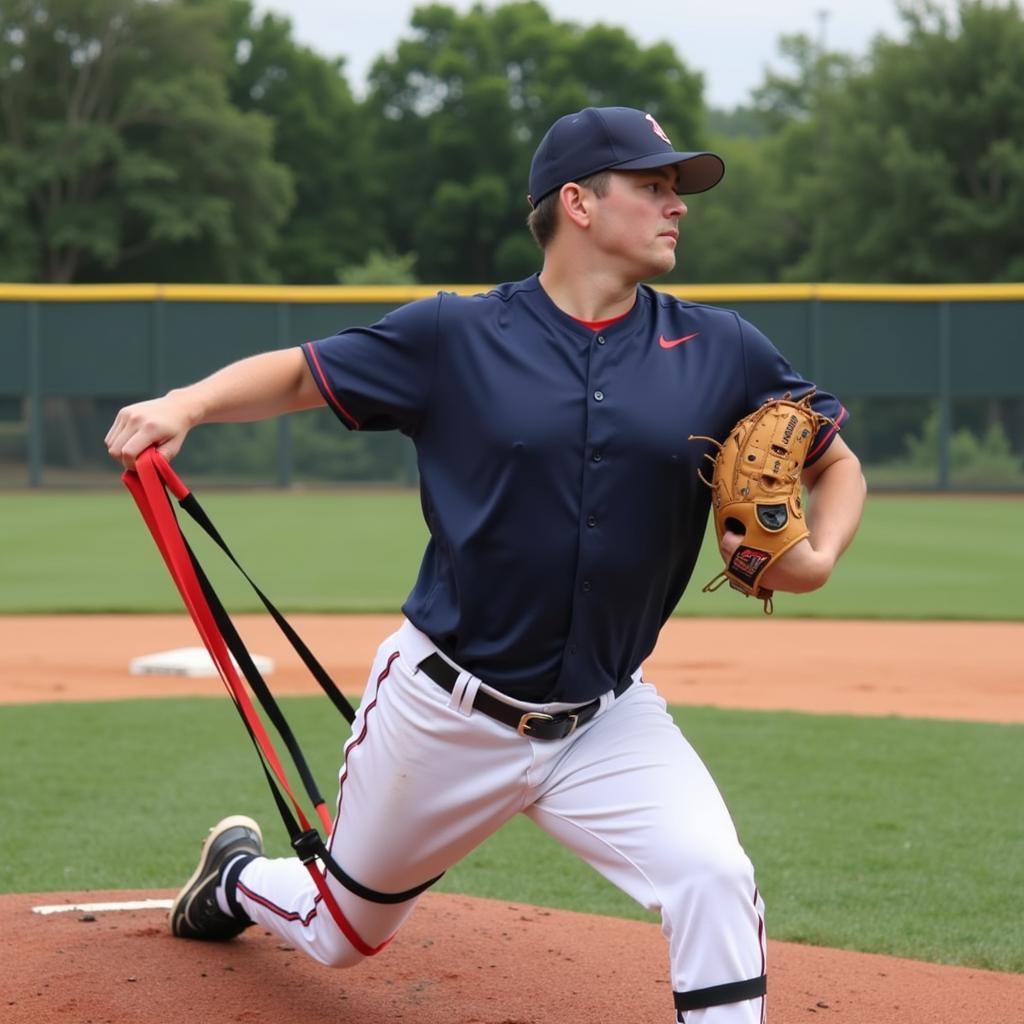Baseball Bands for Pitchers: The Ultimate Guide to Enhanced Performance
October 21, 2024Baseball bands have become increasingly popular amongst pitchers looking to gain a competitive edge on the mound. These simple yet effective tools can help improve pitching mechanics, increase velocity, and reduce the risk of injury. This comprehensive guide will delve into the world of Baseball Bands For Pitchers, covering everything from their benefits and types to how to choose and use them effectively.
 Different Types of Baseball Bands for Pitchers
Different Types of Baseball Bands for Pitchers
Understanding the Benefits of Baseball Bands for Pitchers
Before we dive into the specifics, let’s first understand why baseball bands are becoming a staple in many pitchers’ training routines. Here are some key benefits:
- Enhanced Muscle Activation: Baseball bands provide resistance, forcing your muscles to work harder throughout the throwing motion. This increased activation can lead to improved strength and power in your pitching arm.
- Improved Mechanics: By adding resistance to specific movements, baseball bands help you identify and correct flaws in your pitching mechanics. This can lead to a more efficient and powerful delivery.
- Increased Velocity: One of the most sought-after benefits of baseball bands is their potential to boost pitching velocity. By strengthening the muscles involved in the throwing motion and improving mechanics, pitchers can generate more power and speed.
- Injury Prevention: By promoting proper mechanics and strengthening key muscle groups, baseball bands can help prevent common pitching injuries like rotator cuff tears and elbow strains.
 Pitcher Performing Warm-up Exercises with Baseball Bands
Pitcher Performing Warm-up Exercises with Baseball Bands
Types of Baseball Bands for Pitchers
Not all baseball bands are created equal. There are various types designed to target different aspects of the pitching motion:
- Resistance Bands: These versatile bands come in varying resistance levels, allowing you to customize your workout based on your strength and needs. They can be used for a wide range of exercises targeting different muscle groups.
- Tubing with Handles: Similar to resistance bands, tubing with handles provides resistance and can be used for various exercises. The handles offer a more secure grip for certain movements.
- Shoulder Bands: Specifically designed to improve shoulder mobility and strength, these bands are often used for rotator cuff exercises and pre-game warm-ups.
Choosing the Right Baseball Bands
When selecting baseball bands, consider the following factors:
- Resistance Level: Start with a lighter resistance and gradually increase as your strength improves.
- Material: Look for durable and comfortable bands made from high-quality materials like latex or rubber.
- Size: Choose bands that fit comfortably around your hands, wrists, or arms, depending on the exercises you plan to do.
Integrating Baseball Bands into Your Training
Here are some ways to incorporate baseball bands into your pitching routine:
- Warm-up: Use light resistance bands for arm circles, shoulder rotations, and other dynamic stretches before each pitching session.
- Strength Training: Incorporate resistance bands into your regular weightlifting routine to add resistance to exercises like bicep curls, tricep extensions, and rows.
- Pitching Drills: Many pitching-specific drills can be enhanced with baseball bands. For example, you can use bands for long toss simulations or to add resistance during bullpen sessions.
 Baseball Pitcher Using Bands for Enhanced Training Drills
Baseball Pitcher Using Bands for Enhanced Training Drills
Conclusion
Baseball bands offer a range of benefits for pitchers of all levels, from youth leagues to professional athletes. By incorporating these tools into your training regimen and using them consistently, you can enhance your performance, reduce the risk of injuries, and gain a competitive advantage on the mound. Remember to start slowly, listen to your body, and gradually increase the resistance as you get stronger.